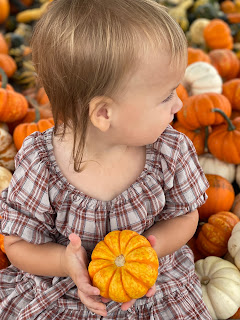Birthdays are a huge deal in our family. And by huge deal, I mean HUGE. Growing up, my parents made birthdays a big celebration for me and my siblings. We had family and friends over, fun food, games, activities, cake and lots of presents. As adults, my sister and I have continued that tradition with our own kids. We remember feeling so special on those days and we wanted to carry on this birthday tradition.
Since my nieces recently celebrated their birthdays, I wanted to share some tips to make your child's birthday a special one! No matter how big or small you celebrate, you can make your child feel special, important and celebrated. You'll not only be a mom (or dad) boss, but you'll help create a confident and well-rounded child with a healthy self-esteem.
Here are some ideas to make your child feel special on her birthday.
Picking a Theme
My nieces love to choose their birthday theme each year. One chose Snow White and the other chose Lego. We create games, treats, goody bags and activities centered about this theme. Allowing your child to pick a theme fosters their creativity! Usually, they will help create food label titles, goody bag decor and treats, table treats and games.
Think of Surprises
Incorporate surprises! Creating surprises requires thoughtfulness and preparation. When you show your child you thought in advance about her, this makes her feel special. Think about your own life and when someone surprised you with your favorite meal, coffee, flower, outfit or anything! A surprise can be a game you're going to play, the cake you make or buy, the present you give- anything! In fact, my niece didn't want to plan some of her birthday details because she asked to be surprised!
Getting to See Their Social Interactions
Pre-pandemic, they invited all of their friends and one day we will get back to that. But no matter the guest list, it is fun to watch your child interact in a social way. You get to observe how they interact with others, the manners they use, and the excitement they share - things that usually might only happen at school around their peers. During the pandemic, we had family only and still were able to observe these behaviors.
Presents - Bought, Homemade or Experiences!
Whether you have a big or small budget, presents add more attention to the birthday child. And guess what? The best presents are the experiential ones - the kind that require time spent together. We got free passes to a local amusement park and gave them as a birthday present to our nieces. It was such a fun time that didn't even require any money. We've made presents in the form of scavenger hunts. Sometimes, when the girls would give a present, they would re-wrap something around the house - no cost! As they say, it's the thought that counts!
Birthday Kid Chooses the Food
My nieces get to choose the meals of the day - breakfast, lunch and dinner. Sometimes it's a place to order from and sometime's it is a home-cooked meal. What makes it fun is that they are choosing! Giving your child the ability to make choices develops their leadership skills and decision making. Who would have thought such a small gesture could do this. Think to your own life. How many times have you or someone you're eating with had a hard time deciding on where to eat?!
Play Games and Laugh Together
In an earlier bullet I mentioned games. Our family makes up the silliest games and we love playing them! When you can laugh together it shows your child you enjoy their company and want to have fun with them. No matter your budget, you can buy pre-made games or create them yourselves. My niece recently learned about a game and figured out how to create a version of it herself! No cost involved whatsoever. For our Lego party, my sister froze lego figures into ice cube trays and we had to melt it the fastest. On the other hand, my sister and her husband are very creative and built a gem mining station for my niece's Snow White party. So, it depends on your resources. The important thing is to have fun together.
These are some of they ways we celebrate birthdays. Of course there are tons of other ways to make your child feel special. You do what you can and your child will appreciate it! That's what it is all about: showing your child the magic you felt the day she was born, the miracle of her birth or reliving the first birthday you spent together - remembering those beautiful memories and creating new ones each year.



























